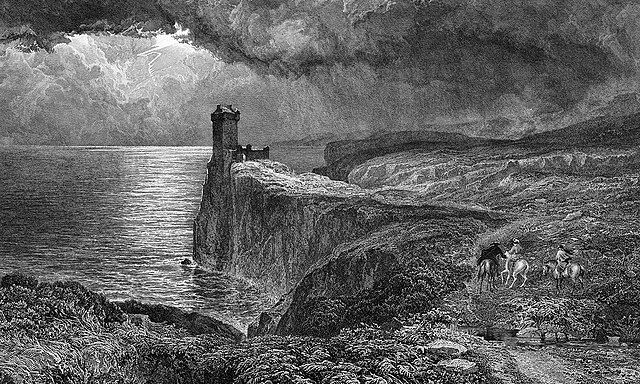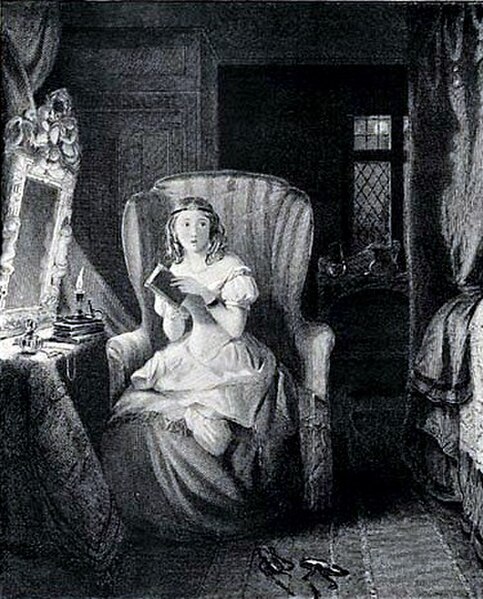Ann Radcliffe was an English novelist and a pioneer of Gothic fiction. Her technique of explaining apparently supernatural elements in her novels has been credited with gaining respectability for Gothic fiction in the 1790s. Radcliffe was the most popular writer of her day and almost universally admired; contemporary critics called her the mighty enchantress and the Shakespeare of romance-writers, and her popularity continued through the 19th century. Interest in Radcliffe and her work has revived in the early 21st century, with the publication of three biographies.
Ann Radcliffe
Gothic fiction, sometimes called Gothic horror, is a loose literary aesthetic of fear and haunting. The name refers to Gothic architecture of the European Middle Ages, which was characteristic of the settings of early Gothic novels.
The ruins of Wolf's Crag castle in Walter Scott's The Bride of Lammermoor (1819)
Strawberry Hill, an English villa in the "Gothic Revival" style, built by Gothic writer Horace Walpole
The Gothic Temple folly in the gardens at Stowe, Buckinghamshire, UK, built as a ruin in 1741, designed by James Gibbs
Catherine Morland, the naive protagonist of Northanger Abbey (1818), Jane Austen's Gothic parody





